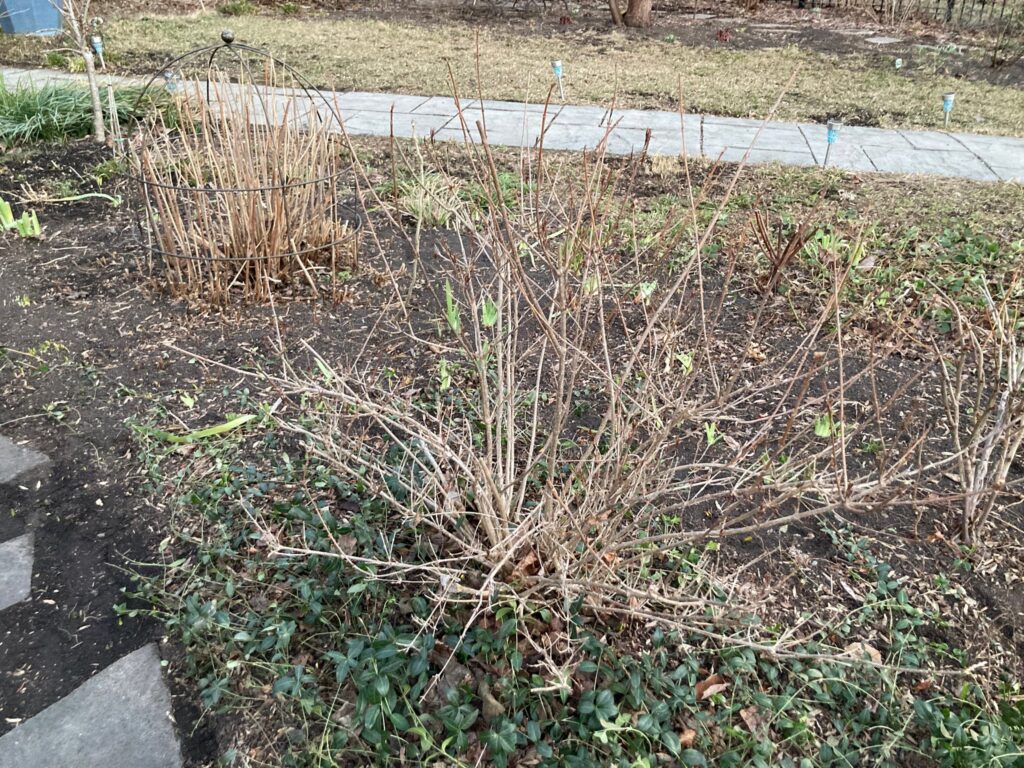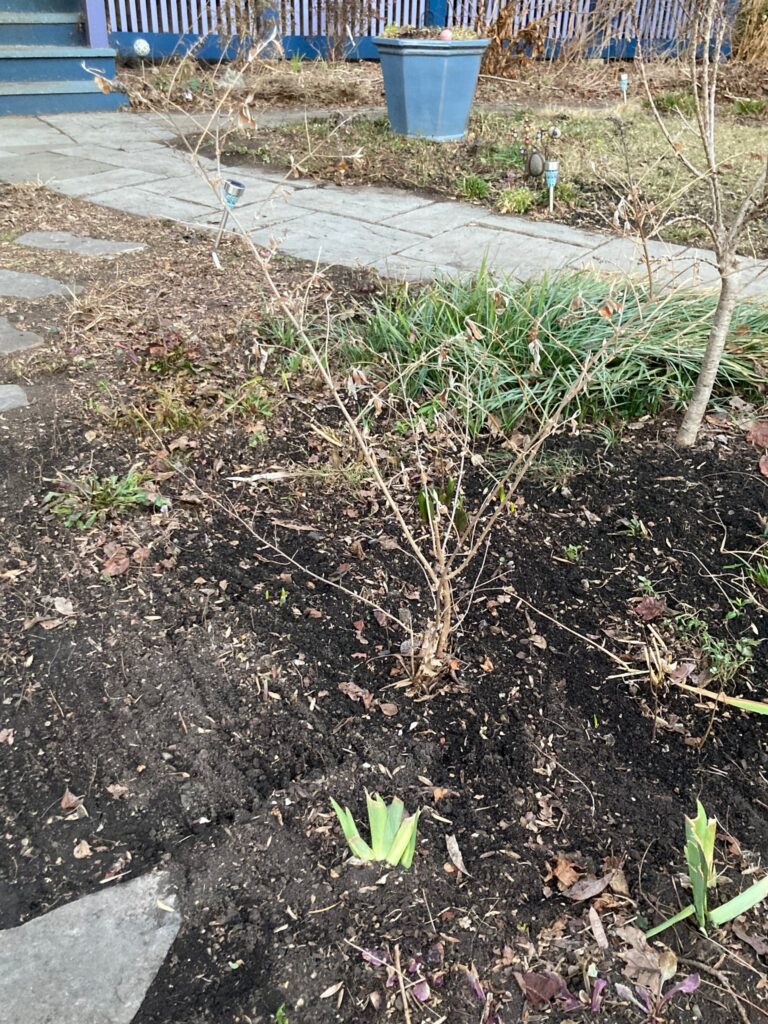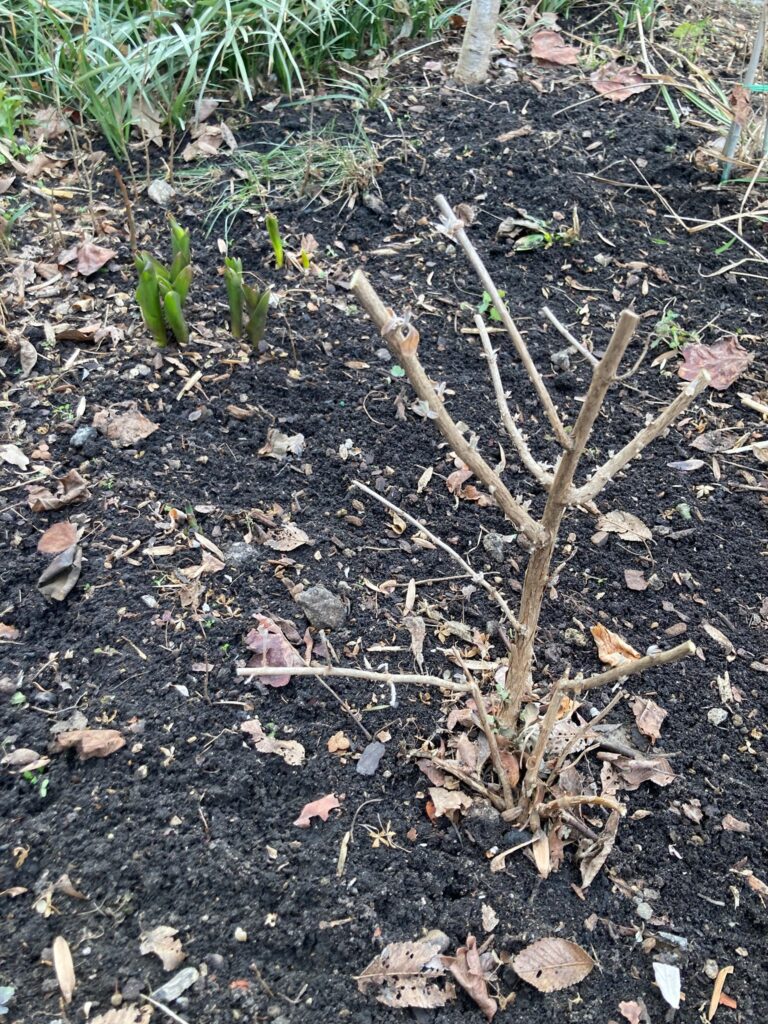One of the key gardening elements that it took me something like 8 years to actually get into my head is the distinction between shrubs and vines that bloom on new wood vs. old wood.
This is SUPER-IMPORTANT for pruning, and it’s why whenever you buy a shrub or vine, you should at least jot down the name of it somewhere, because eventually you’ll probably be looking to prune it, and you’ll want to know if it blooms on old or new wood, and if you don’t know what kind it is and can’t look it up, then you have to just wait a season to see what happens, which might mean missing pruning that year entirely. Which is not the end of the world, but can be frustrating.
(If you’ve moved into a house with an established garden, this is part of why you might want to wait for a year before doing much, so you can observe and make notes on what you have — different varieties of clematis, for example, bloom on new or old vines.)
Yesterday I pruned my weigela (photo 1) and my butterfly bush (photos 2-3). They should be treated differently!
Weigela blooms on both old and new wood, but it blooms heavily in late May or June on old wood — it will get little flowers all along the length of last year’s branches — and only sporadically through the summer on new wood (this year’s growth). So if you prune it now (in early spring), you’re probably cutting off flowers. Usually, people prune weigela in late spring, after it’s finished blooming.
I did trim it just a bit yesterday, mostly for shape and to cut off some branches that had grown into the path, knowing I might lose some flowers in the process.
Usually with weigela, though, you’d wait until it’s done flowering, then prune for shape, to control size, and to rejuvenate the plant (if it’s getting too big or flowering less than it used to, cut back about 1/3 of the branches each year, cutting back to a point where two branches meet — this is called rejuvenation pruning, and usually you do it every few years).
If you want a fuller weigela shrub, you can also saw 2-3 secondary stems (branches growing next to the main stem) down to the ground, using a hand-held pruning saw and cutting the stems upward at a 45-degree angle. (I haven’t actually tried this, but the internet assures me it will work.)
Butterfly bushes, on the other hand, are very hardy and can get huge, AND they bloom on new wood. Prune them basically as much as you want, any time of the year. This is a fairly young one of mine (second photo), and not too big, but I still cut it back to about 8″ off the ground; the new branches will sprout from there, and should be heavy with blooms.
In general, for both of these, as with most pruning of branches, in late winter you can always:
• cut off weak / wispy stems to send more energy to the rest of the plant
• cut off any diseased or dead branches
• prune away a branch if it’s rubbing up against another branch – that spot where they intersect creates a weak spot / wound where disease can easily get into the plant.
Happy pruning!



